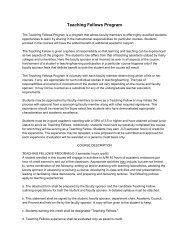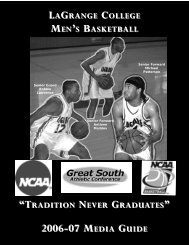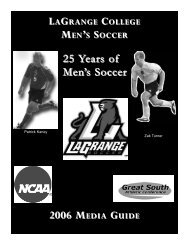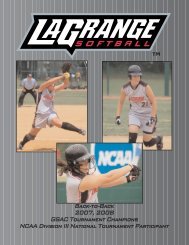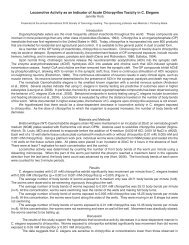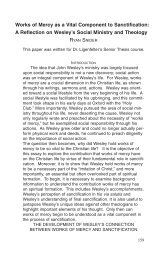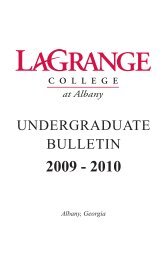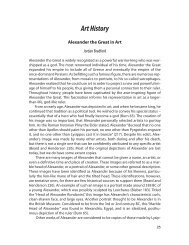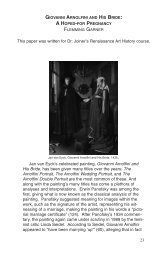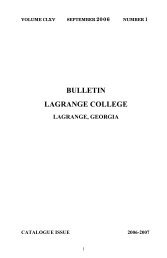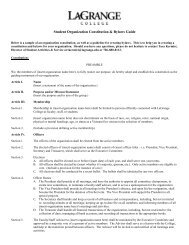The Speed of Light: Historical Perspective and Experimental Findings
The Speed of Light: Historical Perspective and Experimental Findings
The Speed of Light: Historical Perspective and Experimental Findings
Create successful ePaper yourself
Turn your PDF publications into a flip-book with our unique Google optimized e-Paper software.
TRENT SCARBOROUGH AND BEN WILLIAMSON<br />
the speed <strong>of</strong> light must be finite. Alhazen affirmed that light is<br />
movement; therefore it is at one instant in one place <strong>and</strong> at<br />
another instant in another place. Since it is impossible for light<br />
to be in both places at the same time, the transmission <strong>of</strong> light<br />
cannot be instantaneous. Sir Francis Bacon stated in 1620<br />
“Even in sight, where<strong>of</strong> the action is most rapid, it appears that<br />
there are required certain moments <strong>of</strong> time for its accomplishment…<br />
[for there are] things which by reason <strong>of</strong> the velocity <strong>of</strong><br />
motion cannot be seen – as when a ball is discharged from a<br />
musket…” <strong>The</strong>re was still uncertainty seen by Bacon’s contemporary,<br />
Johann Kepler. Kepler was famous for his work on planetary<br />
motion. Kepler reasoned that since light could be propagated<br />
into illimitable space, it required no time. Since light did<br />
not need time, it was immaterial <strong>and</strong> could <strong>of</strong>fer no resistance to<br />
a moving force. Thus according to Aristotelian mechanics (a now<br />
archaic form <strong>of</strong> mechanics that would be superseded by<br />
Newtonian mechanics at least 40 years after Kepler’s death)<br />
light must have an infinite velocity. 2<br />
<strong>The</strong> First Experiments to Determine the <strong>Speed</strong> <strong>of</strong> <strong>Light</strong><br />
A contemporary <strong>of</strong> Kepler <strong>and</strong> Bacon, was Galileo Galilee.<br />
Galileo was the first person to actually attempt to measure the<br />
speed <strong>of</strong> light. Galileo devised that two people should go st<strong>and</strong><br />
with covered lanterns a known distance apart. When one uncovered<br />
their lantern, the other would quickly uncover his lantern<br />
<strong>and</strong> the time difference would be measured. After testing this<br />
experiment at a distance less than one mile, Galileo concluded:<br />
“I have not been able to ascertain with certainty whether the<br />
appearance <strong>of</strong> the opposite light was instantaneous or not; but if<br />
not instantaneous it is extraordinarily rapid – I should call it<br />
momentary.” 2 It could be said that Galileo at least established a<br />
lower limit for the speed <strong>of</strong> light. It is known today that about a<br />
thirtieth <strong>of</strong> a second is the minimum time interval distinguishable<br />
by the unaided, human eye. <strong>The</strong>n Galileo’s experiment put a lower<br />
limit <strong>of</strong> about 9.65 x 10 4 meters per second (m/s) on the speed <strong>of</strong><br />
light; which is about 3000 times less than the currently accepted value.<br />
Renee Descartes sought to get an actual number by greatly increasing<br />
the distance. Descartes proposed that if light was finite with time<br />
than eclipses <strong>of</strong> the moon would be visible on earth later than when<br />
the sun, moon <strong>and</strong> earth were calculated to be in a straight line. When<br />
no delay was detected, Descartes proceeded to declare that light<br />
must be instantaneous. 3<br />
185




